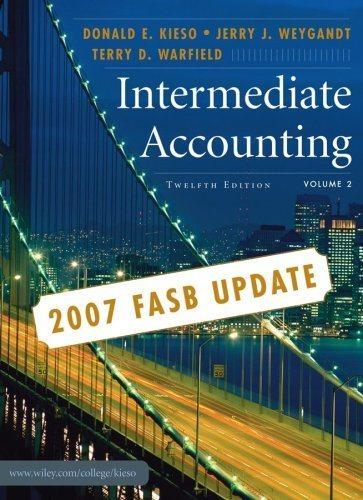(Implications of FASB Statement No. 87) Ruth Moore and Carl Nies have to do a class presentation...
Question:
(Implications of FASB Statement No. 87) Ruth Moore and Carl Nies have to do a class presentation on the pension pronouncement “Employers’ Accounting for Pension Plans.” In developing the class presentation, they decided to provide the class with a series of questions related to pensions and then discuss the answers in class. Given that the class has all read FASB Statement No. 87, they felt this approach would provide a lively discussion. Here are the situations:
1. In an article in Business Week prior to FASB No. 87, it was reported that the discount rates used by the largest 200 companies for pension reporting ranged from 5% to 11%. How can such a situation exist, and does the pension pronouncement alleviate this problem?
2. An article indicated that when FASB Statement No. 87 was issued, it caused an increase in the liability for pensions for approximately 20% of companies. Why might this situation occur?
3. Arecent article noted that while “smoothing” is not necessarily an accounting virtue, pension accounting has long been recognized as an exception—an area of accounting in which at least some dampening of market swings is appropriate. This is because pension funds are managed so that their performance is insulated from the extremes of short-term market swings. A pension expense that reflects the volatility of market swings might, for that reason, convey information of little relevance.
Are these statements true?
4. Understanding the impact of the changes required in pension reporting requires detailed information about its pension plan(s) and an analysis of the relationship of many factors, particularly:
(a) the type of plan(s) and any significant amendments.
(b) the plan participants.
(c) the funding status.
(d) the actuarial funding method and assumptions currently used.
What impact does each of these items have on financial statement presentation?
5. Anarticle noted “You also need to decide whether to amortize gains and losses using the corridor method, or to use some other systematic method. Under the corridor approach, only gains and losses in excess of 10% of the greater of the projected benefit obligation or the plan assets would have to be amortized.” What is the corridor method and what is its purpose?
Instructions What answers do you believe Ruth and Carl gave to each of these questions?
Step by Step Answer:

Intermediate Accounting 2007 FASB Update Volume 2
ISBN: 9780470128763
12th Edition
Authors: Donald E. Kieso, Jerry J. Weygandt, Terry D. Warfield





